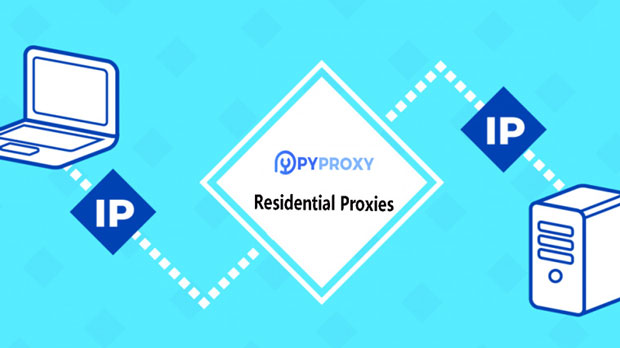In the modern digital landscape, securing online communication has become a top priority. One key aspect of enhancing online security is through the use of SOCKS5 and HTTPS encrypted connections. Many platforms across various industries are integrating these encryption protocols to ensure privacy, protect sensitive data, and bypass restrictions. This article explores which platforms support SOCKS5 or HTTPS encrypted connections, their importance, and how users can benefit from these protocols to maintain online security and privacy. What is SOCKS5 and HTTPS Encryption?Before diving into the platforms that support these protocols, it’s essential to understand what SOCKS5 and HTTPS are.SOCKS5 is a type of proxy server that provides a secure channel for data transmission between a client and a server. Unlike traditional proxies, SOCKS5 is highly flexible, allowing for a variety of traffic types, including HTTP, FTP, and torrents, to pass through securely. SOCKS5 does not alter or inspect the data passing through it, making it a reliable choice for users seeking anonymity and security.HTTPS, or HyperText Transfer Protocol Secure, is an extension of HTTP used for secure communication over a computer network. It encrypts data transmitted between a user’s browser and a website, preventing third parties from intercepting sensitive information. HTTPS is the standard for secure browsing and is commonly used across websites and applications that handle sensitive data such as financial transactions, personal information, and login credentials.Why are SOCKS5 and HTTPS Important for Security?The main reason why SOCKS5 and HTTPS are crucial for online security lies in the encryption they provide. Encryption is a method used to protect data by converting it into a form that can only be read by authorized parties.1. Enhanced Privacy: SOCKS5 and HTTPS both serve to mask a user's IP address. By using these encryption methods, users can protect their location and identity from prying eyes, whether they are using public Wi-Fi or accessing websites that track their activities.2. Data Integrity: HTTPS, specifically, ensures that the data transmitted between the user and the server remains intact. It prevents third-party actors from modifying or tampering with the data during transmission, thus ensuring data integrity.3. Bypassing Geographical Restrictions: Platforms supporting sock s5 proxies enable users to bypass geographical restrictions and access content that may be unavailable in certain regions. By routing traffic through a different server, users can appear as though they are browsing from a location where the content is accessible.4. Protection Against Eavesdropping: HTTPS protects against eavesdropping by encrypting the entire communication between the client and server. This makes it nearly impossible for hackers to intercept or decipher sensitive information.Platforms That Support SOCKS5 or HTTPSThere are several platforms across different sectors that offer support for either SOCKS5 or HTTPS encrypted connections. These platforms cater to users' needs for security, privacy, and data protection. Below are some types of platforms and services that typically offer support for these encryption methods:1. Web BrowsersMost modern web browsers support HTTPS by default. Every time you visit a website with HTTPS in the URL, your browser establishes a secure connection. This has become the norm for browsing, and websites that don’t use HTTPS are often flagged as insecure. Browsers like Google Chrome, Mozilla Firefox, Microsoft Edge, and Safari automatically enforce HTTPS when users enter secure sites, ensuring data protection throughout the browsing experience.In addition to HTTPS, some browsers allow users to configure SOCKS5 proxies. This enables individuals to route their web traffic through a third-party server, further enhancing privacy and security. This feature can be particularly useful for users in regions with internet censorship or surveillance concerns.2. Cloud ServicesCloud service providers also embrace HTTPS for secure data transfer. Whether it’s storing data on cloud servers or accessing hosted applications, cloud services implement HTTPS encryption to protect user data. These platforms typically use HTTPS to establish secure communication between clients and their servers, ensuring that users’ private files and interactions are shielded from unauthorized access.Furthermore, some cloud services offer users the option to configure custom proxies, including SOCKS5 proxies, to route their traffic securely and bypass restrictions. Cloud services that support both SOCKS5 and HTTPS encryption allow businesses and individuals to securely connect to their systems and access data remotely with confidence.3. Online Streaming PlatformsMany online streaming platforms utilize HTTPS to ensure secure connections between users and their content delivery networks. This is particularly important for protecting subscription data and preventing unauthorized access to premium content. As online streaming becomes increasingly popular, these platforms need to offer secure methods of communication to keep their content protected and preserve user privacy.Some streaming services also support SOCKS5 proxies, enabling users to access region-locked content and enhancing privacy while watching videos. SOCKS5 encryption can help users bypass content restrictions and access streaming libraries from different geographical locations.4. VPN ServicesVPN (Virtual Private Network) services are one of the most common platforms that support both SOCKS5 and HTTPS encryption. VPNs are designed to provide users with a secure, encrypted tunnel through which they can access the internet, protecting their data and privacy from hackers, ISPs, and other potential threats.VPN providers typically offer socks5 proxy support as an additional layer of security and privacy. With SOCKS5, users can route specific types of traffic through a proxy server, further masking their IP address and increasing their anonymity.5. Messaging and VoIP ServicesMessaging and Voice over Internet Protocol (VoIP) platforms that handle sensitive communication data also often support encrypted connections, including HTTPS and SOCKS5. Whether it’s for end-to-end encrypted messaging or secure voice calls, these platforms understand the importance of protecting users' privacy.For example, messaging platforms supporting HTTPS encryption ensure that your conversations and data are kept private, even when traversing potentially insecure networks. Some platforms also allow users to configure SOCKS5 proxies for enhanced anonymity, particularly in regions with heightened surveillance or censorship.6. File-Sharing and Torrenting ServicesFile-sharing platforms, particularly those that deal with large files or peer-to-peer (P2P) connections, benefit greatly from SOCKS5 encryption. Torrenting services, in particular, often recommend using SOCKS5 proxies to prevent the leakage of user IP addresses and protect privacy. SOCKS5 allows users to anonymize their torrenting activities by routing traffic through a proxy server, masking their real location and preventing tracking.As the internet continues to evolve and the need for enhanced security and privacy grows, SOCKS5 and HTTPS encryption protocols play a pivotal role in ensuring secure and private online interactions. Many platforms across various industries, including web browsers, cloud services, streaming platforms, VPN services, messaging systems, and file-sharing platforms, offer support for these encryption methods to protect user data, safeguard privacy, and bypass geographical restrictions.For individuals and businesses alike, understanding which platforms support these encryption methods and how to leverage them is critical for maintaining online security. By utilizing these protocols, users can safeguard their sensitive information and enjoy a more private and secure internet experience.
Apr 18, 2025



















































